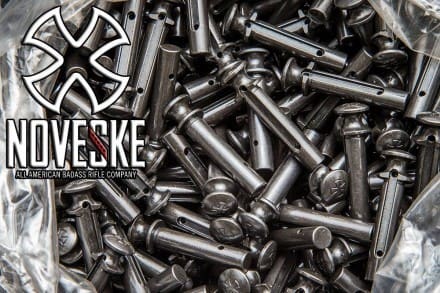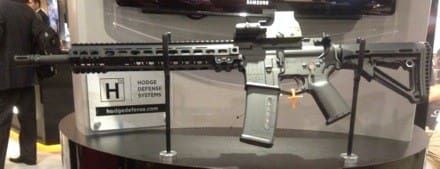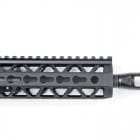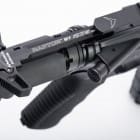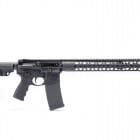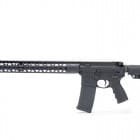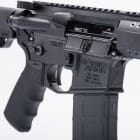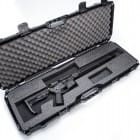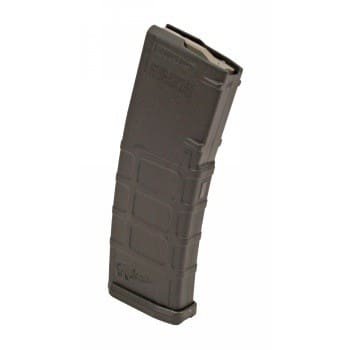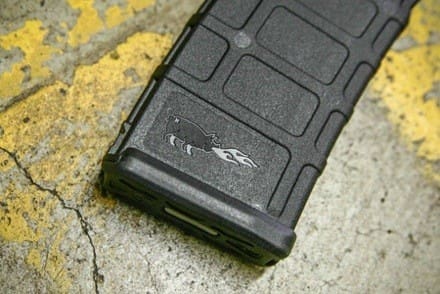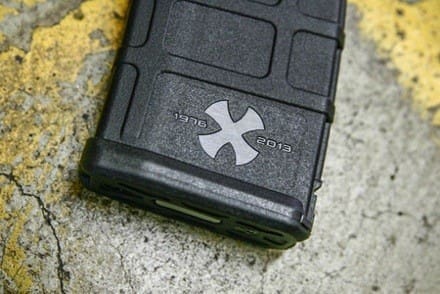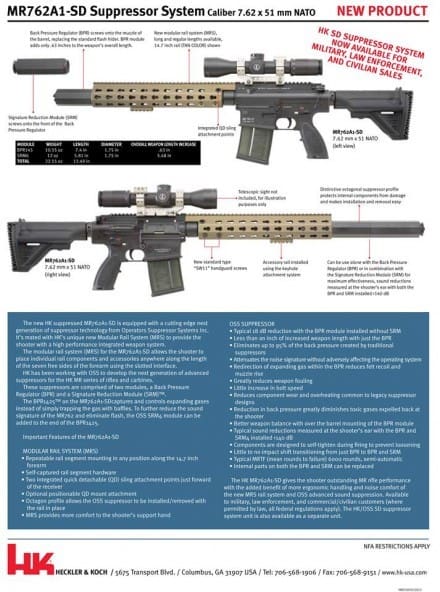At SHOT Show, LWRCI showed me an interesting new carbine demonstrator. It looks like their standard IC-style carbine with a 10 round magazine peeking out from the mag well. But then I noticed that there is no magazine release.

Turns out, it features a 10 round, spring loaded, fixed magazine, you grasp the bottom of the magazine and pull until the bullet-shaped loading gate aligns. Then you can feed ammunition into the magazine to top it off. When you are done, you release the magazine and it automatically closes under spring pressure.
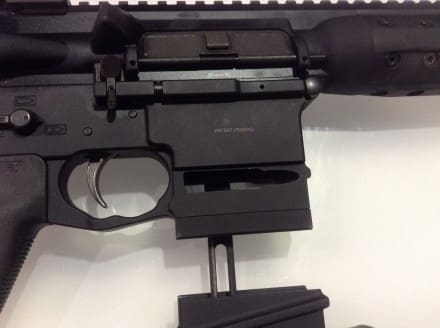
This is still a concept demonstrator and not yet ready for primetime but it’s good to see industry developing rifles for every segment of the market; even those who live in areas with restrictive gun laws. When the latest wave of legislation was proposed last year, I knew that someone would analyze the laws and begin to work on technologies that accommodate them, yet allow the user to continually top off the magazine and in a for factor we all know and love, the Stoner AR platform.
I was so impressed with the concept that, during SHOT Show, I mentioned this rifle when asked by others what I had seen that was cool. Many in industry were intrigued with the idea and supported the notion. In fact, I was so struck by the rifle that I uncharacteristically shot and posted a quick video on the demonstrator to the SSD Facebook page. However, I was quite dismayed by the reaction from the readers. I noticed industry fans liked the rifle. Many, disappointingly, were outraged by LWRCI’s development of the rifle which they felt was an act of capitulation to laws they don’t agree with. Some mentioned that LWRCI should spend their money on legal action, opposing prohibitive gun legislation. Apparently, they don’t realize how much money the firearms industry pours into organizations that lobby for your gun rights.
I cannot explain this upside down attitude that would rather leave citizens without guns, than offer them something that complies with these laws. The attitude reminds of a spoiled child who won’t accept something unless they get it the way they want it. I find it to be a defeatist attitude that eschews resistance via innovation in favoring hunkering down awaiting change via legislation or the court system, or worse yet, abandoning areas with restrictive gun laws altogether. Naturally, the issue must be confronted via the middle path, with a balance of adaption during periods of prohibition combined with legislative and legal actions including education, lobbying, and court challenges.
Whether you agree with their LWRCI’s actions on a philosophical level, you have to admit that it is an innovative approach and I hope that it spurs more innovation industry-wide.


